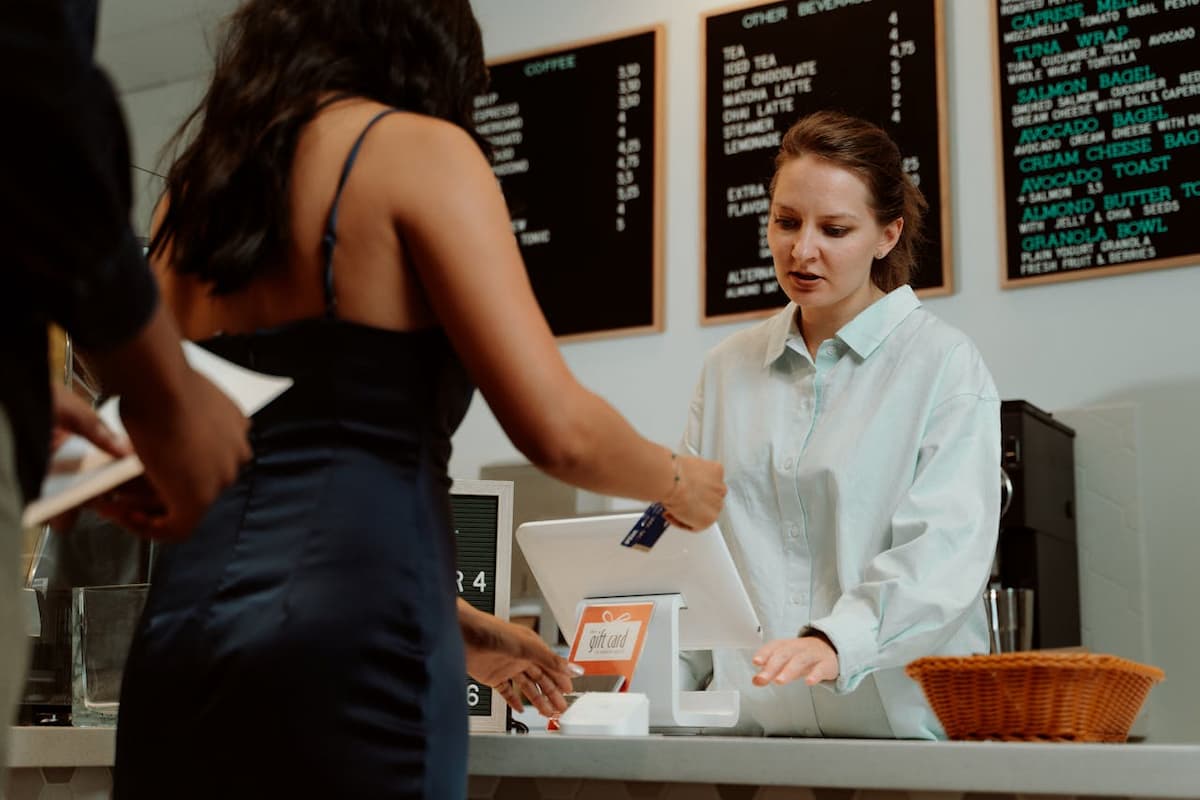The FoodTech industry continues to grow at a rapid pace, and the number of users of food ordering apps is constantly increasing. If you're wondering how to create a food delivery app or are planning your own online food order app development solution, you've come to the right place. Grab something to drink, sit back, and check out how to build a food delivery app tailored to the real needs of the market, step by step.
We'll go through the basic steps, such as choosing development methods, defining key features and ensuring a smooth user experience. This is an indispensable knowledge pill for business owners that will not only help you better understand how to prepare for your investment, but also avoid possible obstacles during development.
Table of Contents:
1. Validating Your Food Ordering App Idea
2. Choosing the Right Development Method
3. Defining Your Business Model
4. Selecting Essential Features
5. Designing the User Interface
7. Testing and Quality Assurance
8. Point of Sale (POS) System Integration
9. Digital Wallets for Seamless Payments
11. Marketing Strategies for Your Food Ordering App
12. Post-Launch Maintenance and Updates
Validating Your Food Ordering App Idea
Before developing an app for food vendors, as in the case of other types of apps, validation should be done. Conducting market research allows you to understand the needs and expectations of users. At the same time, it gives direction to the app to solve real problems. Subjecting the project to competitive analysis and allowing reviews is another of the steps worth considering before undertaking development. Feedback from users will provide insight into their preferences and allow you to carve out space for competitive advantage. For example, if users consistently complain about slow delivery times or limited menu options, these are areas where your app can excel.
Also, social media can come in handy as a platform for gathering feedback and gauging user interest in an application concept. Creating dedicated accounts allows you to collect direct information from your target audience. This makes it easier to improve branding and the food delivery process. In addition, a landing page with a registration option can show the level of interest in the app idea before the development phase begins.
Validating an idea ensures that time and resources are not spent in a concept that does not generate interest among the audience. It is their involvement that influences idea validation and helps focus on features that interact with their needs and benefits.
Do you have an idea for a restaurant app?
Validation is the first step to success in food delivery app development. Learn how to check if your app solves real problems and attracts users.
Choosing the Right Development Method
After validating your food delivery app idea, the next step is selecting the right development method. Outsourcing development is often more cost-effective than hiring an in-house developer team, allowing you to leverage experienced developers without a long-term commitment. When choosing a software development partner, examining their previous project portfolio ensures they have relevant experience.
For a budget-friendly and user-friendly approach, no-code platforms like Builder.ai, AppMachine, and Bubble.io are viable solutions. These app builder platforms enable the creation of a free food delivery app without coding or extensive tech knowledge, making development accessible to non-technical users.
Cross-platform app development is another option to consider, as it can reduce costs while still providing a satisfactory user experience. Your platform choice will significantly influence your technology stack and overall development costs. Additionally, many companies choose to develop apps using this approach.
Whether you choose outsourcing, no-code platforms, or cross-platform development, the key is selecting a method that aligns with your budget and technical capabilities, ensuring a smooth and efficient development process.
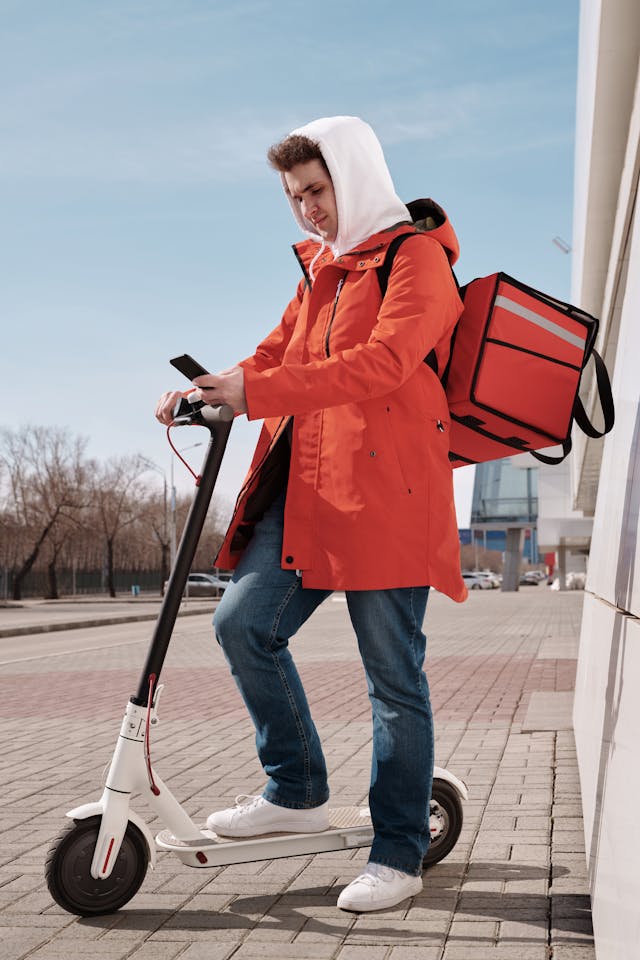
Defining Your Business Model
After choosing your development method, defining your restaurant business model is the next step. Many food delivery apps charge restaurants a price in commissions between 15% and 30% per order. While popular, this model can significantly impact restaurant owners’ profitability. Some platforms impose service and processing fees, typically ranging from 2% to 4% per transaction.
Creating your own foodservice app allows you to avoid commission fees and retain 100% of customer spending, offering significant financial benefits. Additionally, having your own app gives you more control over the customer experience and delivery process, improving customer satisfaction and strengthening your brand.
Selecting the right business model is crucial for maximizing profitability and ensuring long-term success for businesses. Controlling your delivery system and avoiding third-party fees allows you to deliver superior service to your customers and boost your bottom line.
Selecting Essential Features
Choosing the right features for your food ordering app is a critical step. Personalization enhances user experiences by tailoring options and recommendations to individual preferences based on customer data. Simple and diverse pay options are crucial for a smooth transaction process and customer satisfaction, allowing users to choose from credit cards, digital wallets, and even cash on delivery.
Grow your delivery app with a digital wallet that drives sales
Integrate a modern digital wallet into your service! Our solutions perfectly support food delivery app development - they increase payment convenience and user loyalty. Find out how we can help your app stay ahead of the competition.
Real-time key features like live order tracking and instant notifications are essential for enhancing the user experience in food delivery apps. GPS integration allows users to track their food in real-time, adding transparency and trust. Additionally, a user-friendly search filter helps customers quickly find their desired restaurants or dishes, providing convenience and save time. Food delivery services, including Uber Eats, can further improve these experiences by ensuring timely and accurate deliveries to deliver food.
Communicating promotions, reminders, and updates through push notifications keeps users engaged and informed. These features improve user satisfaction and streamline operational processes, making it easier for restaurant owners and delivery personnel to fulfill orders efficiently.
Designing the User Interface
A well-designed user interface (UI) is crucial for keeping users engaged and satisfied. A structured UI can prompt more frequent app use, leading to higher customer retention. Incorporating dynamic lists helps users quickly identify available menu items and menus, improving their ordering experience. For example, a dynamic list can automatically update to show only currently available items in demand, saving users time and frustration.
Utilizing advanced technologies such as AI can further enhance customer service through chatbots that assist in ordering and provide real-time support. These chatbots can answer common questions, suggest popular menu items, and handle complaints, making the user experience seamless and enjoyable.
The design phase sets the stage for smooth development by ensuring the app is visually appealing, functional, and user-friendly. This preparation makes subsequent development more efficient and effective.
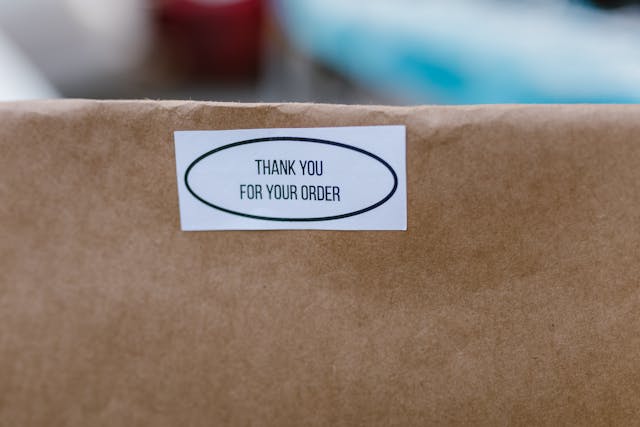
Developing the App
With your design in place, it’s time to focus on the technical aspects of developing your app. Improving loading speeds is crucial, as users expect quick access to information and the ability to place orders swiftly. Selecting the right backend framework is important, with popular options including Symfony and Laravel for PHP, Django for Python, and Express.js for JavaScript.
Choosing an appropriate database is also vital. Options like MongoDB, PostgreSQL, and MySQL cater to different scalability and performance needs. Additionally, the choice between dedicated and cloud servers affects the app’s scalability and management, with cloud servers often preferred for their flexibility.
Blockchain technology can be employed to provide transparency in the food delivery process, creating a tamper-proof record of every transaction and building trust among users. The development process requires careful planning and execution to ensure all components work seamlessly together. A robust backend framework and database, combined with fast loading speeds and transparent transactions, will result in a reliable and efficient application for foodservice.
Testing and Quality Assurance
Testing and quality assurance (QA) are crucial for ensuring your food delivery app functions flawlessly. Effective test management can identify issues that may lead to negative customer experiences, such as bugs in the payment system or glitches in the app interface. Automated testing can streamline the QA process by checking for functionality errors after each update, saving time and resources.
Creating comprehensive test cases that include all scenarios, even rare ones like network failures, is essential for thorough testing. Regular updates to test cases are necessary to align with new features and changes in the app’s design. Choosing appropriate test management tools can improve the efficiency and effectiveness of the QA process, ensuring a high-quality product.
Thorough testing and quality assurance are vital for launching a polished and reliable app. Addressing potential issues early on ensures a smooth user experience and builds customer loyalty, which can help navigate the learning curve.
Point of Sale (POS) System Integration
Integrating a Point of Sale (POS) system into your food ordering app streamlines the order management process for restaurant owners. A POS system acts as the central hub where orders from the app are received, processed, and tracked in real-time, ensuring accuracy and efficiency. This integration helps synchronize online orders with in-house operations, reducing errors and improving order fulfillment speed. Additionally, modern POS systems often provide valuable insights through sales analytics, inventory management, and customer data, empowering restaurant owners to make informed business decisions and enhance overall service quality.
Digital Wallets for Seamless Payments
Digital wallets have become an essential feature in food delivery apps, offering customers a convenient and secure way to pay for their orders. By allowing users to store their payment information within the app, e-wallets enable quick, one-click checkouts without the need to repeatedly enter card details. They support multiple payment methods, including credit and debit cards, bank transfers, and even mobile payment platforms like Apple Pay or Google Pay. Incorporating digital wallets not only enhances the user experience by simplifying transactions but also increases the likelihood of order completion, boosting customer satisfaction and loyalty.
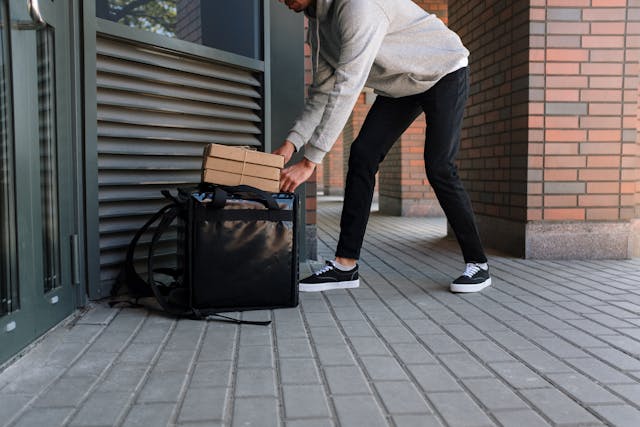
Launching Your App
Launching food delivery app is an exciting milestone that requires careful planning. The primary store for distributing Android apps is Google Play Store, while the Apple App Store is the main platform for iOS apps. App store optimization (ASO) improves your app’s visibility through keyword targeting and appealing visuals to attract potential users.
A well-designed app icon can significantly impact user engagement and recognition, making it easier for your app to stand out in crowded app stores. Push notifications can send timely updates about promotions and order statuses to users, keeping them engaged and informed.
A successful launch sets the stage for your app’s future growth. Optimizing your app store listing and leveraging push notifications maximizes visibility and user engagement from day one.
Marketing Strategies for Your Food Ordering App
Marketing your food delivery app is crucial for attracting and retaining users. Paid advertising options like social media ads and search engine marketing can significantly boost app downloads. Partnering with influencers can enhance your app’s reach by leveraging their follower base and creating buzz.
Email marketing remains a cost-effective method to retain users and promote offers to your app’s audience. Effectively utilizing social media can engage potential customers and create a community around your app. Push notifications can send timely updates about promotions and order statuses to users, keeping them engaged and informed.
Conducting competitor analysis can reveal successful strategies and areas for your app to stand out. A dedicated website for your food delivery app can enhance visibility and provide additional access points for users. Effective marketing strategies are essential for continuous growth and user retention, ensuring your app’s long-term success.
Post-Launch Maintenance and Updates
Post-launch maintenance is essential for keeping your application user-friendly and secure. Regular maintenance addresses bugs and performance issues, ensuring a smooth user experience. Preventive maintenance involves routine checks to prevent future app issues, ensuring long-term stability. Emergency maintenance is crucial for addressing sudden issues that can prevent users from placing orders.
Adaptive maintenance is necessary for ensuring compatibility with new operating systems and payment systems, keeping your app up-to-date. Ideally, the same development team should handle the app’s maintenance post-launch to ensure continuity and effective troubleshooting.
Continuous maintenance and updates are vital for keeping your app relevant and user-friendly. Addressing issues promptly and ensuring compatibility with new technologies helps maintain a high level of user satisfaction and loyalty.
Summary
Creating a successful food ordering app involves several crucial steps, from validating your idea to marketing your app and maintaining it post-launch. By following this guide, you can develop an app that meets the needs of your customers and stands out in a competitive market.
With careful planning, effective marketing strategies, and continuous maintenance, your FoodTech app can become a valuable asset for your business, enhancing customer satisfaction and boosting your bottom line.
Partnering with an experienced development team familiar with the foodservice industry can significantly ease the process. Companies like Railwaymen bring extensive knowledge of the food delivery market, backed by numerous completed projects, which helps ensure your app is tailored to real-world needs and delivers a seamless experience from concept to launch.
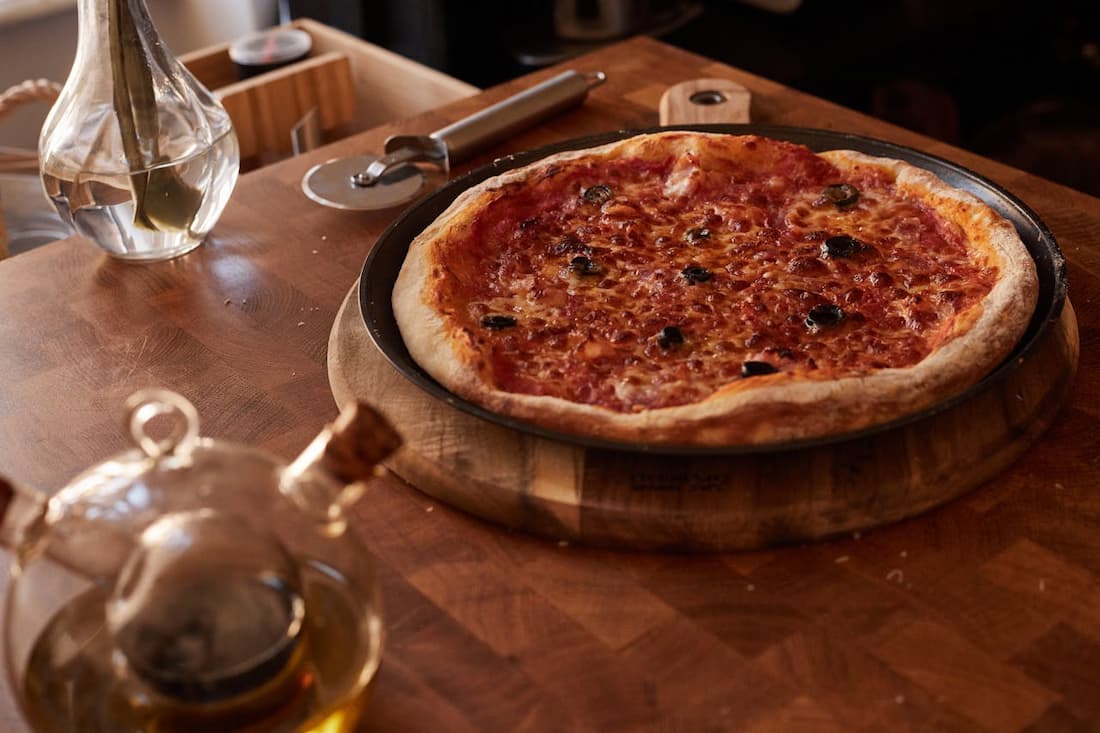
%20(1)%20(2)%20(1).jpg)


